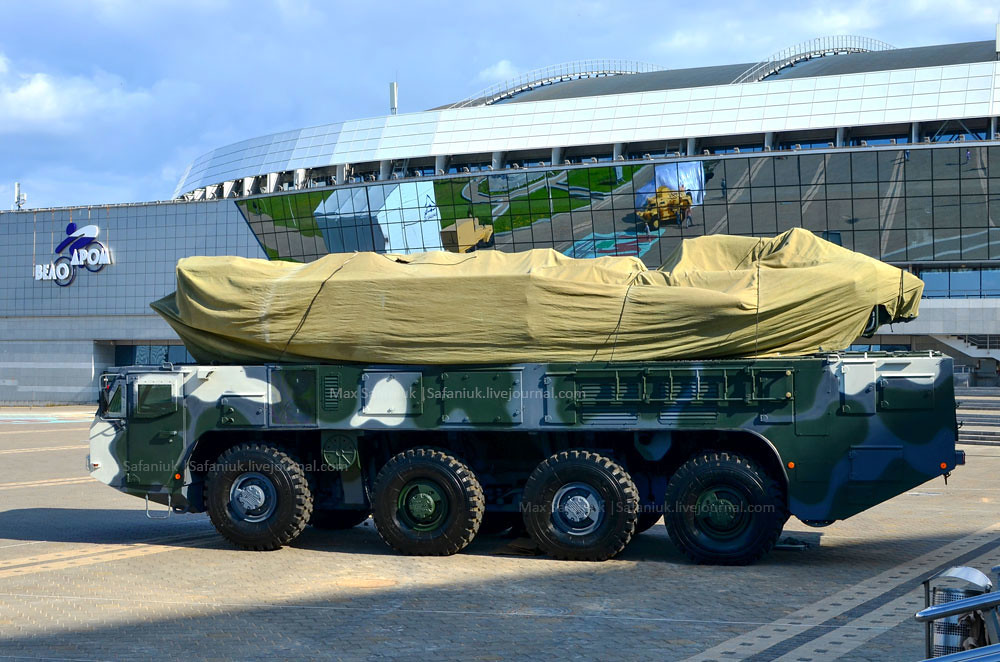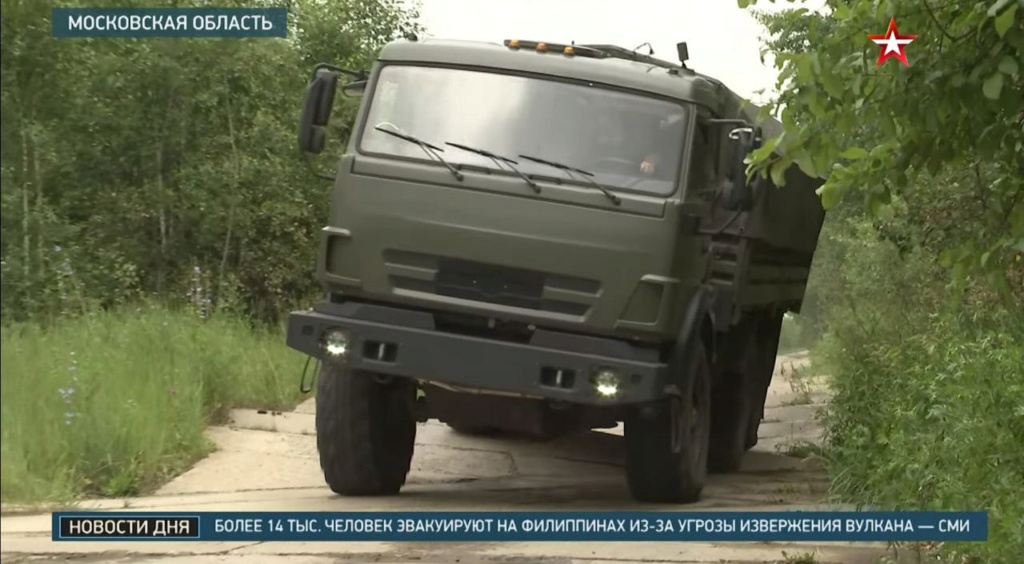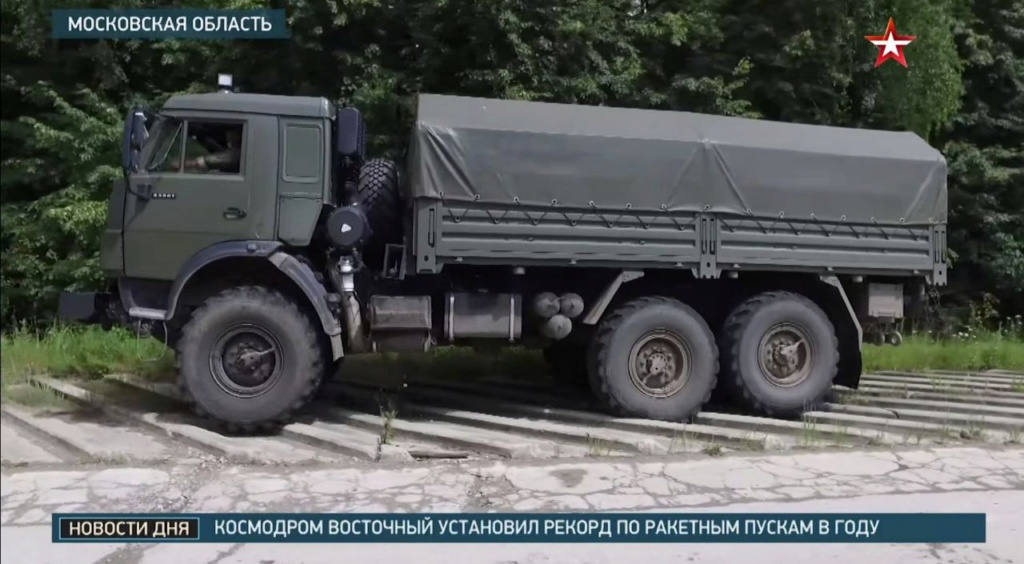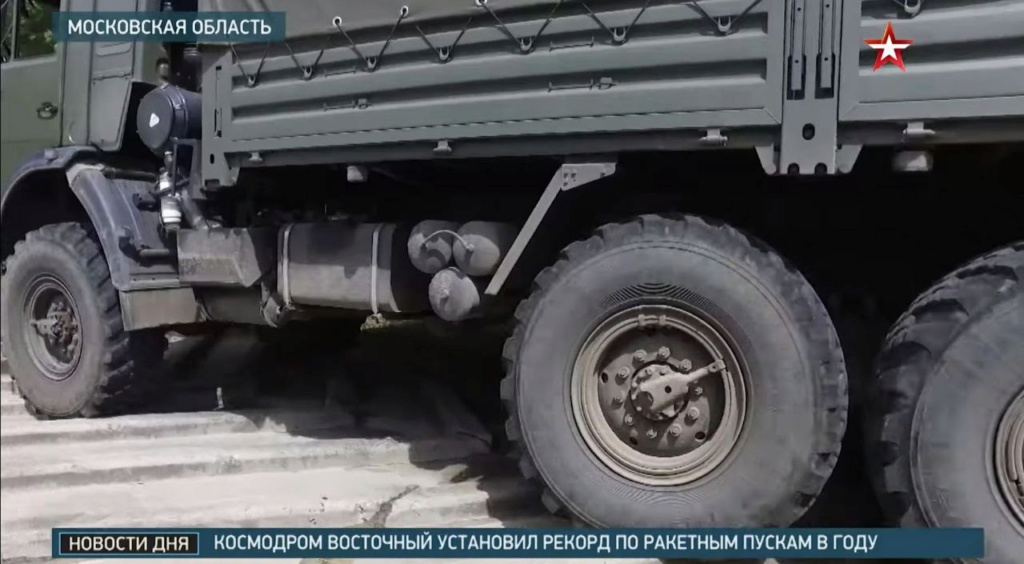Moscow Institute of Thermal Engineering is working on the creation of a new mobile rocket complex
September 3rd, 23:29
According to Alexander Privalov's article “Long-suffering tractors” published in the newspaper “Military-Industrial Courier” , “work in the USSR and the Russian Federation to improve mobile ground-based missile systems (PGRK) has never been interrupted. A new impetus was given to them two years ago ... As a result, the Ministry of Defense of the Russian Federation opened another research work (R&D), which received its own code. The main executor of this research work is MIT Corporation JSC (developer of all domestic PGRKs put into service).
The rest of the text of A. Privalov 's article is devoted to the problem of creating in Russia special wheeled chassis and tractors for missile systems, outlining the well-known views of this author (although now the author likes KamAZ again and does not like BAZ so much):
Political events in Belarus prompted tackling the problem of import substitution for the Strategic Missile Forces. Namely, the chassis for mobile missile systems, which are produced at the MZKT - Minsk Wheel Tractor Plant. So, why does the Russian Federation not yet have its own special wheeled chassis and tractors (SHKT) for the Strategic Missile Forces? Although it would seem that the country has the ability to do them.
KamAZ vs Bryansk Automobile
Work in the USSR and the Russian Federation to improve mobile soil missile systems (PGRK) has never been interrupted. A new impetus was given to them two years ago, when they decided to abandon the supply of Belarusian tractors. As a result, the Ministry of Defense of the Russian Federation opened another research work (R&D), which received its own code. The main executor of this research work is MIT Corporation JSC (developer of all domestic PGRKs put into service). It also develops the concept of creating chassis, tractors for mobile complexes. The Minsk Wheel Tractor Plant was not involved in the case - all co-executors were only Russian.
Today, in the Russian Federation, two factory teams are engaged in the development of military SKShT: the Bryansk Automobile Plant (BAZ) and PJSC KamAZ together with JSC Remdizel (Naberezhnye Chelny).
KamAZ began developing the chassis back in 2008-2009, the contract was concluded with the Main Armored Directorate of the RF Ministry of Defense (GABTU), the research project received the code "Platform". Accordingly, the development work acquired the name "Platform-O". Previously, Naberezhnye Chelny did not deal with this topic, but everything possible was done so that the BAZ could not take part in the competition, which could perform a new development better than others. Bryantsev was simply thrown away. Those were the times when Anatoly Serdyukov "ruled" in the RF Ministry of Defense (no wonder that KamAZ did not cope with the case. - Ed.).
The results are known: samples of KAMAZ chassis were accepted for supply to the RF Armed Forces, but they were not in demand due to the prohibitive cost, the use of imported auto components, extremely low reliability, and failure to meet a number of technical requirements. A lot of money wasted. If we calculate the amounts for all the agreements and contracts concluded by the "smut" with government customers in the framework of the R&D complex "Platform", the amount will be much more than 10 billion rubles. I think it makes sense for the experts of the Accounts Chamber to start counting. It is noteworthy that the "Platform" at KamAZ was led by retired Colonel General Vladislav Polonsky, head of the GABTU in 2004-2007.
When two years ago R&D on a new missile system began again, it was no longer possible to ignore the BAZ. The leadership of the Ministry of Defense of the Russian Federation was replaced in November 2012, and BAZ became part of the Almaz-Antey VKO concern at the end of 2015. And an unpleasant odor from the quality of work performed at KamAZ in professional circles spread unpleasant. Despite this, the Bryansk Automobile Plant has not yet become an active participant in the work.
The leaders of KamAZ again actively lobbied for the developments carried out in the course of the failed development work "Platform-O". Initially, representatives of BAZ and Almaz-Antey could participate in meetings on the topic, but did not use this right. Therefore, the customers reacted superficially to the developments in Bryansk. As a result, the new development for the Strategic Missile Forces was based on the SKShT of the KamAZ-7850x family. The motivation of the KamAZ management was simple: the state had already spent money on the "Platform-O" - in vain or what? Although, I will note that at this stage of work, this choice is not so critical. In the course of the new research work, an answer must be given - what is to be done in the course of development work (R&D). While there is no final decision, the options are being worked out.
In general, the work is going in the right direction, although not without difficulties. There are all the prerequisites for a full-scale development of prototypes of SKShT to begin in the Russian Federation in a year or two, which will far surpass the Minsk chassis and tractors in all respects. I believe that the main task is not to repeat the mistakes made by the Platform. The main ones are organizational and personnel. They directly influenced the adoption of incorrect technical decisions.
Personnel collapse
At KamAZ, a team of specialists in SKShT was created at an accelerated pace. But the main part of the designers started work after the R&D "Platform" was completed. In connection with the haste in the course of the R&D "Platform-O" people worked practically for wear and tear, the specialists barely had time to carry out the current work. Therefore, those who were hired in 2011, when the R&D was already underway, had the opportunity to get acquainted with the results of the R&D only in 2017.
After the completion of the ROC "Platform-O" by the order of the Deputy General Director for Personnel Management and Organizational Development of PJSC "KamAZ" No. 348 dated August 3, 2018, all 70 employees who were subordinate to the chief designer for special wheeled chassis (GC SKSH) were reassigned to Scientific and technical center (STC) of KamAZ for newly created divisions. The latter have nothing to do with the development of military tractor chassis. The objectives of this organizational structural change were announced: “1.1. Retention and retention of highly qualified specialists of the units of the chief designer of special wheeled chassis (hereinafter referred to as SCSH) in the STC. 1.2. Intensification of work within the framework of measures for import substitution of components and assemblies, reduction of dependence on the supply of automotive components and components of foreign production. "
It was expected that as a result, the staff of highly qualified personnel of the units of the chief designer of the SKS in the STC would remain at a level of at least 90 percent. After the completion of the "Platform-O", as required, the designers performed and continue to carry out tasks related to the development of promising SCSHT. But the intensity of these works is not at all the same as before.
In the spring of last year, the participants of the ROC "Platform-O" were awarded. The author of the article has no information about what awards were received by the leaders of KamAZ, probably the highest. In general, they tried to include in the award lists the maximum number of managers who participated in the work of allied enterprises and involved organizations. Evil tongues claim that many of those who have always opposed the Platform also received awards. I suppose there were no refuseniks from the orders. Thus, the dissenters were gagged, so the participants in the work are now extremely reluctant to talk about the shortcomings.
And they lay primarily in the vicious organization of work. Not talented designers were appointed to leading positions, but so-called effective managers, whose main goal is to master the allocated funds.
The reasons for the failure of the ROC "Platform-O" were laid down already at the stage of research. The lead contractor did not make comprehensive expert assessments - it was proposed to analyze technical proposals at the stage of development work. One of the main mistakes is the actual implementation of research and development work within the framework of R&D, which is unacceptable. The practice of developing components in the ROC for the creation of final products has shown its inconsistency. The second-tier co-executors who had the best technical solutions, but did not suit the top managers of KamAZ, were squeezed out by various methods. In the relationship between the chief contractor of the work and his partners, there were conflicts that were considered in arbitration courts.
It is no wonder that everything ended in failure and wasted a tidy sum of government money. Over the past two years, personnel changes have taken place in the leadership of the teams developing the military command and control staff.
In April last year, Alexander Shevchenko was appointed Deputy General Director of PJSC KamAZ for special projects. Since November 1, 2019, Evgeny Makarov, who previously held the position of deputy chief designer for new developments of automotive units and special equipment, has become the chief designer of KamAZ PJSC - the director of the scientific and technical center (STC). Danis Valeev, who worked as the chief designer of KamAZ and director of the scientific and technical center for almost a quarter of a century, was transferred to the position of advisor to the general director of PJSC KamAZ. Vladislav Polonsky, the advisor to the general director of KamAZ, the head of the R&D complex Platforma, was gradually removed from the leadership. Let me remind you that Colonel General Polonsky was at the head of the Main Armored Directorate of the Ministry of Defense in 2004-2007, and Lieutenant General A.A.
At the STC KamAZ, the style of management is changing, the designers of the plant began to receive assignments for mathematical modeling of the design of promising SKSHT. But the work manager is now extremely limited in the monetary component. The reasons for the scanty funding are clear: the customers and co-executors are not satisfied with the results of the R&D platform "Platform", so they fear a repeat of history. The work and documents of the GABTU slow down, which earlier Alexander Shevchenko himself had accepted. Now, being on the other side of the matter, he can no longer change them.
Bryansk: also problems
At the BAZ, staffing is also not without problems. Since November 2015, the management of the enterprise has managed to be replaced five times! In the fall of 2018, Aleksey Sdoobnov became the executive director of Bryansk Automobile Plant JSC, and the next changes began. And with the post of chief designer, after the BAZ entered Almaz-Antey, there was a leapfrog. In December 2018 and. about. The chief designer (and then simply the chief designer) of the automobile plant was appointed a young promising specialist Vadim Tarichko. Although he came to the plant relatively recently, he had time to join the team and fully understand all the ongoing processes.
The BAZ has not yet managed to reverse the negative tendencies in personnel matters at BAZ. The plant was looking for designers for key positions, but did not find them. Last year, the staffing of the design department was completely shaken up at Bryansk Automobile. Someone left, some of those who left earlier came - in fact, little has changed. But some of the leading experts who offered sound ideas for the development of the plant and for the development of new designs were reassigned to positions with demotion.
This year, under the pretext of coronavirus infection, all designers over 65 were fired from BAZ. The veterans were also dismissed, who did everything possible to ensure that the enterprise took part in the development of replacement for Minsk tractors. At a number of other defense industry enterprises, even during the spread of coronavirus infection, no one had the idea of parting with experienced Soviet specialists. And young personnel are often unable to work with veteran dedication.
So far, there is no certainty that BAZ is interested in actively participating in work on chassis for the Strategic Missile Forces, although there are all the prerequisites for that. In November 2018, the powers of the sole executive body of the Bryansk Automobile Plant joint-stock company were transferred to the North-West Regional Center of the Almaz-Antey VKO Concern (NWRC). Structurally, in the NWRC, the role of the lead design team is assigned to KBSM JSC, which over several decades has carried out many successful developments of ground equipment for the Strategic Missile Forces.
Why are the leaders of the Almaz-Antey Concern and the SZRTs taking too sluggish actions and not promoting the active involvement of BAZ in the work to replace Minsk tractors? Or did the leaders of Almaz-Antey and Rostec (the main shareholder of KamAZ) divide the spheres of influence?
How to fix the situation?
So, it is long overdue for changes in the organization of work on the creation of SCSHT. The author of the article four years ago sent to a number of authorities, including the Military-Industrial Commission of the Russian Federation, a proposal: the position of general designer for SKShT should be introduced, since special wheeled chassis-tractors are a special type of military vehicles intended for installation and towing military equipment capable of deciding the outcome of any military operation. Today the personnel decision must be made urgently! Until there is one-man command in this matter, the Russian Federation will continue to be left without its own serial SKShT for mobile complexes of the Strategic Missile Forces, and may also lag behind in other classes of this equipment.
Earlier, it was proposed to create a unified automobile corporation at the federal level, which would unite the efforts of developers of military automotive equipment. According to the information received, specialists working on the creation of domestic military tractors are also gradually coming to the idea of consolidating the efforts of domestic enterprises. Consultations are already underway on the creation of a completely new structure in the country that could unite the developers of the SCST. The main thing is not to listen to the arguments of businessmen who are interested not in increasing the country's defense capability, but in extracting super profits.
Alexander Privalov,
editor-in-chief of "Automobile catalog"
From the editorial board of "Military-industrial courier"
The article was conceived as a polemical response to V. Tuchkov's article “Yars” with a Belarusian accent ”. But in fact A. Privalov confirmed the conclusions of our author. In the Russian Federation, production was destroyed and disorganized, qualified specialists were dispersed. But Alexander Lukashenko, no matter how you treat him, the Minsk Wheel Tractor Plant (MZKT), inherited from the USSR, has preserved and has not lost technology. And his management in industry turned out to be much better than the "defective management" in the state corporations of the Russian Federation. The failure of the Platform-O project is a guarantee of that.
https://bmpd.livejournal.com/4130890.html










